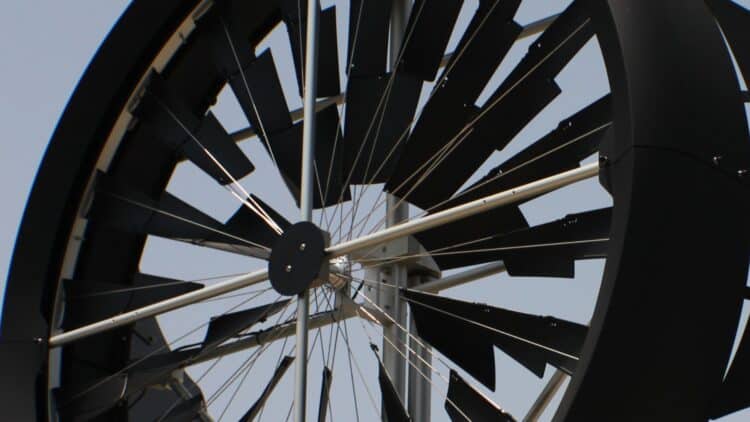For years now, new promises have been emerging in the revolution in residential energy generation, and some solutions have even been launched. We have already gone through the phase of solar panels, and now we are looking for an invention that is even quieter, more compact, and more efficient. It was in this scenario that a project emerged that aims to generate up to 1,500 kWh per year, and no, it is not related to solar energy… That is why many are already wondering: Will this be the end of the need for solar panels?
Solar panels seem to be losing ground
If we list all the energy sources available today, wind energy might come out ahead of solar energy, at least for now. That’s why the Honeywell Wind Turbine WT6500 emerged in this scenario, an award-winning project that was subsidized and widely publicized as the future of domestic wind energy. Why was it considered all this? Because of its innovative design, which can generate up to 1,500 kWh per year.
What makes it so different from the others? Let’s look at the main points: unlike traditional turbines with large blades and noisy gearboxes, the WT6500 is betting on a different concept, called the Blade Tip Power System. Well, instead of generating electricity through a central shaft, the energy is captured directly at the edge of the blades, where the speed is naturally higher. This technology eliminates the need for complex mechanical components and greatly reduces noise and vibration.
In addition, experts made sure to create this turbine to be super compact. We are talking about just 1.8 meters in diameter, in addition to being very light (185 kg), and its operation begins with winds of just 0.5 mph. In other words, all of these factors serve to reinforce the objectives of this project:
- Operate efficiently in urban areas.
- Perform installations on rooftops and even in regions with moderate winds.
- Easily integrate with battery systems, inverters, and even the local power grid.
The project that receives subsidies from the Federal Government
To give us an even better idea of the magnitude of this project, the US government, during the Barack Obama era, invested millions in incentives and stimulus programs, with some projects, such as the installation of turbines on the roof of the North Charleston City Hall, standing out. The marketing for this campaign was very strong, and even earned awards from Popular Mechanics, Edison Awards, and even the seal of “one of the most brilliant technologies of 2009”.
However, there was a gap between expectations and reality in this project. This is because several pilot projects failed to deliver concrete results… the wind turbines (of different designs like these) that were installed did not generate significant energy. That is why, in 2014, the ones in North Charleston were removed. To make matters worse, the company’s exclusive supplier went bankrupt, which paralyzed production. And, amid this whole situation, WindTronics closed its operations shortly thereafter, leaving all the projects behind.
What went wrong with the WT6500?
We ended up asking ourselves: how did a project with so much capacity end up going wrong? The answer lies in the combination of technical problems, physical limitations, and management failures. Even if the BTPS idea was good, the actual amount of energy generated by the WT6500 was much lower than what the marketing claimed.
Meanwhile, solar panels (which we thought had lost ground) evolved and became more efficient, cheaper, with easier integration and less dependent on specific conditions. An example of this evolution came from Europe, which is manufacturing multicolored (green, turquoise, or blue) solar panels with very good results.


